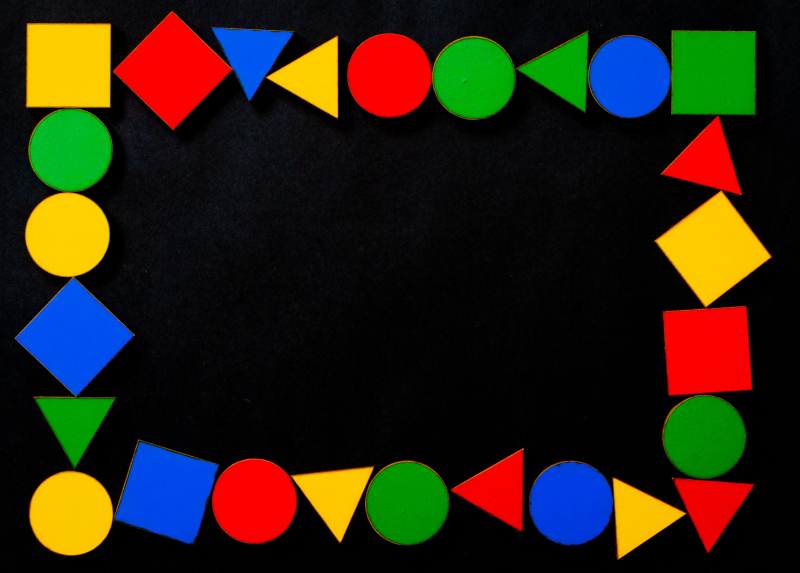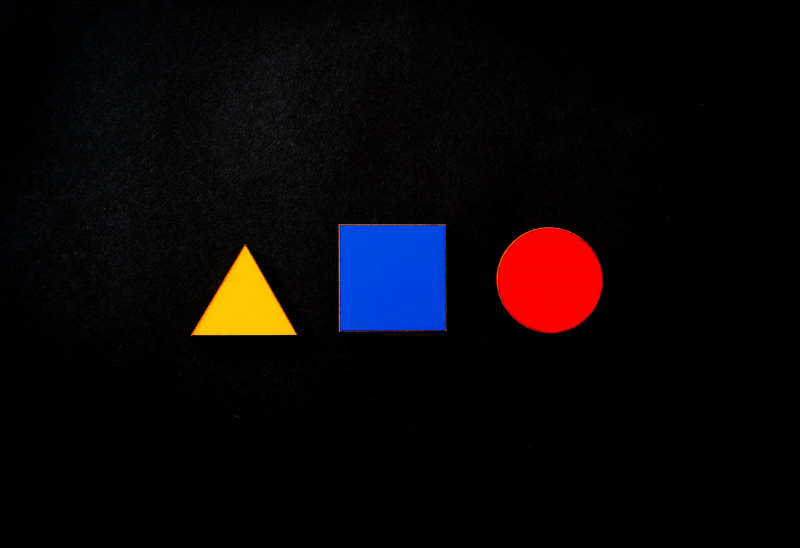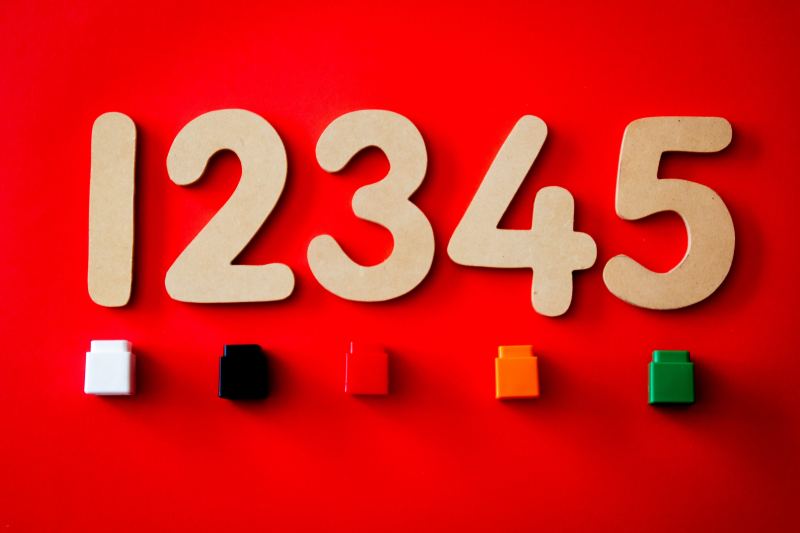Top 10 Definition Essay Examples about Math
Delving into "Definition essay examples about Math," we uncover the practical and profound role of mathematics in our daily lives. Beyond the classroom, math ... read more...becomes a language that shapes our understanding of the world.
-
Essay topic: The Magic of Numbers.
Answer:
In the vast realm of mathematics, numbers serve as the foundational building blocks that unlock the secrets of the world around us. Numbers are more than mere digits; they are the keys that open doors to understanding and unraveling the mysteries of our everyday experiences. In this essay, let's embark on a journey to explore the enchanting world of numbers, appreciating their significance and the magic they bring to our lives.
At their core, numbers are symbols that represent quantities. Think about counting your fingers or the beats in your favorite song - each number tells a story of amount or order. Numbers guide us through our daily routines, whether it's telling time, measuring ingredients for a recipe, or keeping track of how many friends are in a group.
Numbers aren't just about calculations, they're about patterns and sequences that add a rhythm to our world. Consider the sequence of days in a week or the order of the alphabet - numbers play a role in creating order and structure. They're like the beats in a song, creating a melody that helps us navigate the symphony of life.
In school, numbers become our companions in subjects like math and science. They help us solve problems, understand equations, and make sense of the world's phenomena. Whether it's calculating the area of a rectangle or figuring out the speed of a moving car, numbers become our allies in unraveling the mysteries around us.
Beyond the classroom, numbers find their way into our hobbies and interests. Think about your favorite sports team's jersey number or the score in a video game. Numbers enhance our enjoyment and understanding of the activities we love, adding a layer of excitement and measurement to our experiences.
In conclusion, numbers are not just abstract symbols; they are the silent storytellers of our lives. From counting the petals on a flower to calculating the minutes until the school bell rings, numbers weave themselves into the fabric of our existence. So, as high school students navigating the world of mathematics, let's embrace the magic of numbers, appreciating their role in bringing order, understanding, and a touch of enchantment to our everyday experiences.

Photo by Black ice via pexels 
Photo by Pixabay via pexels -
Essay topic: Exploring Shapes in Our World.
Answer:
In the captivating landscape of geometry, shapes emerge as the fundamental elements that give structure and form to the world we perceive. Shapes are more than just figures; they are the visual language through which we understand and interact with the physical environment. In this essay, let's embark on a journey to explore the fascinating realm of shapes, appreciating their significance and the role they play in shaping our everyday experiences.
At their essence, shapes are the outlines that define objects and spaces. Picture a circle, a square, or a triangle-each shape tells a unique story. Whether it's the roundness of a clock face, the four corners of a book, or the pointed tip of a pencil, shapes surround us, adding structure to the visual tapestry of our surroundings. Shapes aren't confined to textbooks or classrooms; they exist in the very fabric of our daily lives. Consider the rectangular windows in your home or the circular wheels on your bicycle. Shapes, like puzzle pieces, fit together to create the familiar objects that populate our homes, schools, and communities.
In the world of nature, shapes reveal themselves in the petals of a flower, the symmetry of a butterfly's wings, or the spherical form of a raindrop. Shapes, in their diversity, contribute to the beauty and harmony we find in the natural world, showcasing the precision and artistry inherent in the design of living things.
Shapes become our companions in creative expression. Think about the triangles and squares that form a piece of origami or the circles and ovals that bring characters to life in drawings. Artists use shapes as the building blocks of their creations, crafting visual stories that capture the imagination and communicate ideas.
In conclusion, shapes are not abstract concepts; they are the visual vocabulary that helps us make sense of our surroundings. From the rectangles of our school books to the spirals of seashells on the beach, shapes are the silent architects of our visual experiences. As high school students navigating the world of geometry, let's appreciate the significance of shapes, recognizing their role in adding structure, beauty, and a touch of wonder to our everyday encounters.

Photo by Magda Ehlers via pexels 
Photo by Magda Ehlers via pexels -
Essay topic: The Joy of Counting.
Answer:
In the vibrant tapestry of everyday life, counting emerges as a delightful rhythm, a universal language that adds order and understanding to our experiences. Counting is more than just saying numbers; it is the heartbeat that accompanies our daily routines, a skill that shapes our interactions with the world. In this essay, let's embark on a journey to explore the enchanting world of counting, appreciating its simplicity and the joy it brings to our lives.
At its core, counting is the act of assigning numbers to objects or actions. Picture counting the number of apples in a basket, the steps as you climb stairs, or the beats in your favorite song. Counting accompanies us from the moment we wake up to the time we close our eyes, guiding us through the various activities that make up our day.
Counting isn't limited to school or math class; it's a practical skill that finds its way into our everyday tasks. Consider counting money at the store, keeping track of the pages in a book, or noting the days until a special event. Counting becomes a reliable companion, helping us stay organized and aware of the quantities that define our routines.
In the world of friendships and play, counting takes on a joyful role. Imagine counting the seconds in a game of hide-and-seek, the number of giggles shared during a playdate, or the high-fives exchanged after a team's success. Counting transforms into a game, adding a layer of fun and camaraderie to our interactions with friends.
As we navigate the complexities of learning, counting becomes a fundamental skill. From mastering basic arithmetic to solving more complex problems, counting lays the foundation for understanding the mathematical concepts that become part of our academic journey. It's not just about numbers; it's about building a solid base for future learning.
In conclusion, counting is not a mundane task; it is a joyful dance with numbers that accompanies us throughout our lives. From the simple act of counting fingers to the more intricate calculations in our academic pursuits, counting is a skill that brings order, awareness, and a touch of playfulness to our experiences. So, as high school students exploring the wonders of mathematics, let's embrace the joy of counting, recognizing its significance in shaping the rhythm of our daily lives.

Photo by Yan Krukau via pexels 
Photo by Magda Ehlers via pexels -
Essay topic: Discovering the World Through Measurement.
Answer:
In the vibrant landscape of daily activities, measuring emerges as a practical and fascinating tool, allowing us to understand and quantify the world around us. Measurement is more than just numbers and units; it is a key that unlocks the mysteries of size, distance, and quantity in our everyday experiences. In this essay, let's embark on a journey to explore the world of measuring, appreciating its simplicity and the valuable role it plays in our lives.
At its essence, measuring involves comparing an object or quantity to a standard unit. Think about measuring the length of a pencil, the weight of a backpack, or the volume of water in a cup. Measurement accompanies us in our daily routines, aiding us in tasks as simple as baking cookies to more complex activities like constructing a model.
Measuring isn't confined to academic settings; it is a practical skill that finds its way into our everyday chores and adventures. Consider measuring ingredients for a recipe, gauging the time it takes to walk to school, or estimating the distance between two points. Measurement becomes a reliable guide, helping us make informed decisions in our daily lives.
In the world of creativity and exploration, measuring becomes a tool for crafting and understanding. Picture measuring the dimensions of a canvas for a painting, the angles in a geometric drawing, or the beats in a musical composition. Measurement transforms into a means of precision, enabling us to express ourselves more accurately in various creative endeavors.
As we navigate our academic journey, measuring becomes a fundamental aspect of subjects like science and mathematics. From determining the volume of liquids in chemistry to calculating the area of shapes in geometry, measurement becomes the language through which we explore the intricacies of these disciplines. It's not just about numbers; it's about understanding the world with precision.
In conclusion, measuring is not a mundane task; it is a dynamic tool that empowers us to interact with the world more effectively. From the simplicity of measuring ingredients in the kitchen to the complexities of scientific experiments, measuring is a skill that adds a layer of accuracy and understanding to our experiences. So, as high school students navigating the world of learning, let's embrace the fascinating world of measuring, recognizing its significance in unraveling the mysteries of size, distance, and quantity in our everyday encounters.

Photo by Los Muertos Crew via pexels 
Photo by Karolina Grabowska via pexels -
Essay topic: The Visual Language of Graphs.
Answer:
In the dynamic realm of mathematics, graphs emerge as powerful visual tools, offering a clear and concise way to represent data and relationships. Graphs are more than just lines and points; they are a visual language that simplifies complex information and makes it easier to understand. In this essay, let's embark on a journey to explore the world of graphs, appreciating their simplicity and the valuable role they play in our academic and everyday lives.
At their core, graphs are visual representations of data, transforming numbers into accessible and meaningful images. Picture a simple line graph showing the temperature change over a week, a bar graph comparing the heights of different plants, or a pie chart illustrating the distribution of favorite pizza toppings. Graphs provide a visual snapshot of information, making it easier to interpret and draw conclusions.
Graphs aren't confined to the pages of textbooks; they are practical tools that find their way into various aspects of our daily lives. Consider a line graph tracking your study hours and grades, a bar graph showing the popularity of different music genres, or a scatter plot mapping the growth of plants over time. Graphs become companions in decision-making, helping us analyze information and make informed choices.
In the world of science and exploration, graphs become essential tools for presenting findings and understanding patterns. Imagine a line graph depicting the speed of a moving car, a bar graph showcasing the variations in animal populations, or a pie chart representing the composition of different gases in the atmosphere. Graphs simplify complexity, allowing us to grasp scientific concepts more easily.
As we navigate our academic journey, graphs become integral components of subjects like mathematics and science. From interpreting data in biology to analyzing trends in economics, graphs become the visual aids that enhance our understanding and communication of information. It's not just about numbers; it's about creating a visual story that speaks universally.
In conclusion, graphs are not abstract representations; they are dynamic tools that bring data to life. From the simplicity of bar graphs to the intricacies of line graphs, graphs are the visual language that adds clarity and depth to our understanding of information. So, as high school students exploring the wonders of mathematics and science, let's appreciate the valuable role that graphs play, recognizing their significance in simplifying complex information and enhancing our ability to interpret and communicate data.

Photo by ThisIsEngineering via pexels 
Photo by ThisIsEngineering via pexels -
Essay topic: Decoding the Language of Math Symbols.
Answer:
In the vast landscape of mathematics, symbols emerge as the silent communicators that bridge the gap between numbers and concepts. Math symbols are more than just squiggles on a page; they are a language that helps us express and understand mathematical ideas. In this essay, let's embark on a journey to explore the world of math symbols, appreciating their simplicity and the crucial role they play in our academic journey.
At their essence, math symbols are visual representations of mathematical operations and relationships. Picture the plus sign (+) indicating addition, the minus sign (-) representing subtraction, or the equal sign (=) signifying balance. These symbols become our guides, helping us navigate through the world of numbers and operations with clarity.
Math symbols aren't confined to textbooks or classroom settings; they find their way into our daily lives. Consider the multiplication symbol (×) when calculating grocery expenses, the division symbol (÷) when sharing snacks with friends, or the percentage symbol (%) when analyzing discounts during shopping. Math symbols become practical tools, aiding us in various everyday tasks.
In the world of problem-solving and exploration, math symbols become indispensable. Imagine the greater than (>) and less than (<) symbols helping us compare quantities, or the square root (√) symbol unveiling the mysteries of finding the root of a number. Math symbols simplify complex concepts, providing us with a language to express and work with abstract mathematical ideas.
As we navigate our academic journey, math symbols become fundamental components of learning. From understanding the basic operations like addition and subtraction to grappling with more complex concepts like exponents and square roots, math symbols become the alphabet through which we communicate mathematical ideas. It's not just about memorizing symbols; it's about becoming fluent in the language of mathematics.
In conclusion, math symbols are not arbitrary marks; they are the keys that unlock the doors to mathematical understanding. From the simplicity of addition to the intricacies of algebraic expressions, math symbols are the language that enables us to express and communicate mathematical concepts. So, as high school students exploring the wonders of mathematics, let's appreciate the significance of math symbols, recognizing their role in making the language of numbers accessible and understandable.

Photo by Jeswin Thomas via pexels 
Photo by George Becker via pexels -
Essay topic: Pieces of a Mathematical Puzzle.
Answer:
In the diverse landscape of mathematics, fractions emerge as the puzzle pieces that represent parts of a whole, offering a unique way to express and comprehend numerical relationships. Fractions are more than just numbers; they are a language that allows us to describe portions and divisions with precision. In this essay, let's embark on a journey to explore the world of fractions, appreciating their simplicity and the essential role they play in our mathematical understanding.
At their core, fractions are a way of expressing parts of a whole or a group. Picture a pizza sliced into halves, a chocolate bar divided into quarters, or a group of friends sharing a cake equally. Fractions become the means through which we articulate and understand the division of objects, quantities, and even time.
Fractions aren't confined to the pages of textbooks or math class; they are practical tools that find their way into various aspects of our daily lives. Consider dividing an apple into thirds for a snack, sharing a bag of candies equally among friends, or calculating the time spent on different activities throughout the day. Fractions become companions in real-life situations, helping us distribute and understand quantities more precisely.
In the world of measurements and recipes, fractions become indispensable. Imagine following a recipe that requires half a cup of flour, one-fourth teaspoon of salt, or three-quarters cup of milk. Fractions simplify the process of measuring and adjusting quantities, ensuring precision in the kitchen and beyond.
As we navigate our academic journey, fractions become fundamental components of learning. From understanding basic concepts like halves and quarters to tackling more complex operations like adding and subtracting fractions, these numerical expressions become the stepping stones to a deeper understanding of mathematical relationships. It's not just about manipulating numbers, it's about grasping the concept of sharing and dividing in a tangible way.
In conclusion, fractions are not abstract concepts; they are the practical tools that help us navigate the intricacies of division and sharing. From the simplicity of halves to the complexities of mixed numbers, fractions are the language that enables us to express and work with parts of a whole. So, as high school students exploring the wonders of mathematics, let's appreciate the significance of fractions, recognizing their role in making the division of quantities clear and accessible in our everyday encounters.

Photo by Pixabay via pexels 
Photo by ThisIsEngineering via pexels -
Essay topic: The Artistry of the Natural World.
Answer:
In the enchanting canvas of the great outdoors, shapes emerge as the artistic brushstrokes that paint the landscape with beauty and order. Shapes in nature are more than just forms; they are the visual elements that define the world around us, creating a harmonious tapestry of hills, valleys, and everything in between. In this essay, let's embark on a journey to explore the captivating world of shapes in nature, appreciating their simplicity and the mesmerizing role they play in our natural surroundings.
At their essence, shapes in nature are the building blocks of the scenery that surrounds us. Picture the gentle curves of rolling hills, the jagged edges of mountain peaks, or the circular ripples on the surface of a calm lake. Shapes become the language through which nature communicates its inherent beauty and balance.
Shapes in nature aren't confined to grand landscapes; they reveal themselves in the smallest details, too. Consider the delicate symmetry of flower petals, the concentric circles within a tree stump, or the hexagonal patterns on a beehive. Even in the tiniest elements, shapes contribute to the intricacy and precision of the natural world.
In the world of flora and fauna, shapes become signatures of diverse life forms. Imagine the cylindrical trunk of a towering sequoia tree, the spherical nests woven by birds, or the spiral patterns of seashells along the shore. Shapes in nature not only add aesthetic appeal but also serve as functional structures that enable life to thrive in various ecosystems.
As we immerse ourselves in the wonders of the great outdoors, shapes in nature become an invitation to explore and appreciate the world around us. From the symmetry of butterfly wings to the asymmetry of rock formations, shapes contribute to the visual poetry that unfolds in forests, meadows, and oceans alike. It's not just about recognizing shapes, it's about marveling at the natural artistry that shapes create in every nook and cranny of our planet.
In conclusion, shapes in nature are not arbitrary forms; they are the silent architects that mold the breathtaking scenery we encounter. From the simplicity of circles to the complexity of fractal patterns, shapes in nature are the visual elements that add structure, beauty, and a touch of wonder to our outdoor experiences. So, as high school students exploring the wonders of the natural world, let's appreciate the significance of shapes in nature, recognizing their role in creating the breathtaking landscapes that surround us.

Photo by Marek Piwnicki via pexels 
Photo by Pixabay via pexels -
Essay topic: Navigating Challenges: The Art of Problem Solving.
Answer:
In the intricate journey of life, problem-solving emerges as the compass that guides us through challenges, offering a methodical approach to unraveling complexities. Problem-solving is more than just finding solutions, it is a skill that empowers us to navigate obstacles with confidence and resilience. In this essay, let's embark on a journey to explore the world of problem-solving, appreciating its simplicity and the crucial role it plays in our daily lives.
At its essence, problem-solving is the process of finding effective ways to overcome difficulties or obstacles. Picture a puzzle waiting to be solved, a riddle waiting to be unraveled, or a math equation seeking a solution. Problem-solving becomes the toolkit through which we address challenges, fostering a sense of agency in our ability to confront and conquer difficulties.
Problem-solving isn't confined to academic settings; it is a practical skill that finds its way into various aspects of our daily lives. Consider a situation where you need to figure out the best route to school, find a solution to a disagreement with a friend, or come up with creative ideas for a school project. Problem-solving becomes a reliable companion, helping us tackle real-life situations with ingenuity.
In the world of teamwork and collaboration, problem-solving becomes a shared endeavor. Imagine working with classmates to devise a plan for a group project, brainstorming ideas to address a common challenge, or finding compromises to ensure everyone's perspectives are considered. Problem-solving transforms into a collaborative effort, reinforcing the idea that solutions often emerge through shared insights and diverse perspectives.
As we navigate our academic journey, problem-solving becomes a fundamental aspect of learning. From dissecting complex math problems to devising strategies for studying effectively, problem-solving becomes the key to unlocking understanding and success. It's not just about finding answers; it's about developing a mindset that views challenges as opportunities for growth and learning.
In conclusion, problem-solving is not a distant skill; it is a practical and invaluable tool that accompanies us in our daily adventures. From the simplicity of addressing everyday challenges to the complexities of academic problem-solving, this skill empowers us to navigate the twists and turns of life with resilience and creativity. So, as high school students exploring the realms of learning and friendship, let's embrace the art of problem-solving, recognizing its significance in shaping our ability to confront and conquer the challenges that come our way.

Photo by Jeswin Thomas via pexels 
Photo by Karolina Grabowska via pexels -
Essay topic: Unveiling the Hidden Marvels.
Answer:
In the tapestry of our daily routines, math quietly weaves itself into various aspects of our lives, becoming an unsung hero that adds precision and order to our everyday experiences. Math in everyday life is more than just numbers and equations; it is a practical tool that empowers us to make informed decisions, solve real-world problems, and appreciate the intricacies of our surroundings. In this essay, let's embark on a journey to explore the marvels of math in everyday life, appreciating its simplicity and the indispensable role it plays in our routines.
At its core, math in everyday life is about applying numerical concepts to solve practical problems. Picture the act of measuring ingredients for a recipe, calculating expenses for a shopping trip, or determining the time it takes to reach a destination. Math becomes the language through which we make sense of quantities, distances, and time, turning routine tasks into opportunities for mathematical exploration.
Math in everyday life isn't confined to academic settings or complex calculations; it is a tool that finds its way into various aspects of our daily routines. Consider the simple act of budgeting allowance, where math helps in planning and allocating funds for various expenses. Whether dividing a pizza among friends, calculating discounts during a sale, or figuring out the best deals at the grocery store, math becomes a practical companion, offering clarity and efficiency in decision-making.
In the world of personal finance, math becomes an essential ally. Imagine calculating savings for a future goal, understanding interest rates on loans, or budgeting monthly expenses. Math provides the framework for financial literacy, empowering individuals to make informed choices and manage resources responsibly.
As we navigate our academic journey, math in everyday life becomes a bridge between classroom learning and real-world application. From understanding percentages in a sale to interpreting graphs in news articles, math becomes a lens through which we analyze information and make informed decisions. It's not just about mathematical formulas, it's about developing a practical mindset that views math as a tool for problem-solving and decision-making.
In conclusion, math in everyday life is not an abstract concept, it is a practical and invaluable companion that enhances our daily experiences. From the simplicity of measuring ingredients to the complexities of financial planning, math becomes the silent hero that contributes to the efficiency, accuracy, and understanding of our everyday tasks. So, as high school students navigating the complexities of adolescence, let's recognize and appreciate the marvels of math in everyday life, understanding its significance in shaping our daily experiences and preparing us for a future of informed decision-making.

Photo by Tima Miroshnichenko via pexels 
Photo by Kindel Media via pexels































